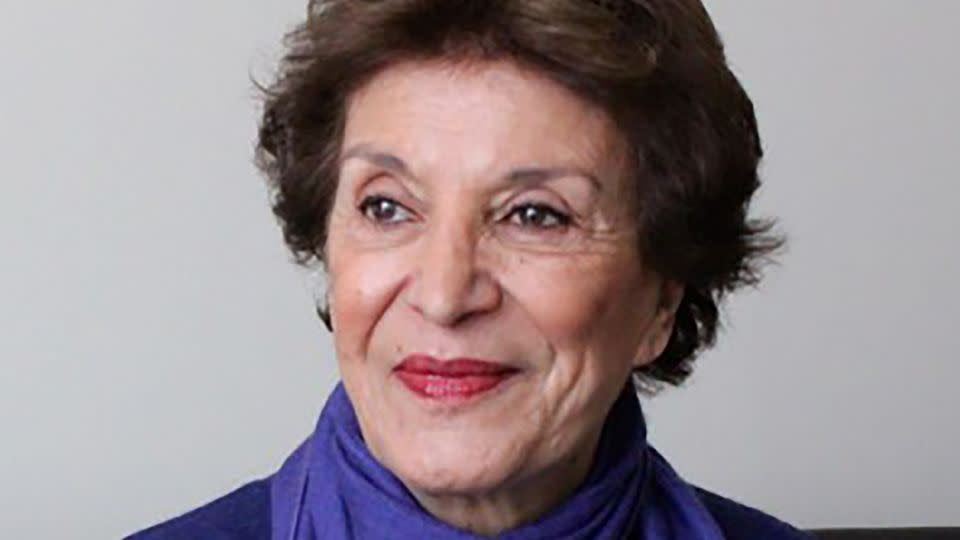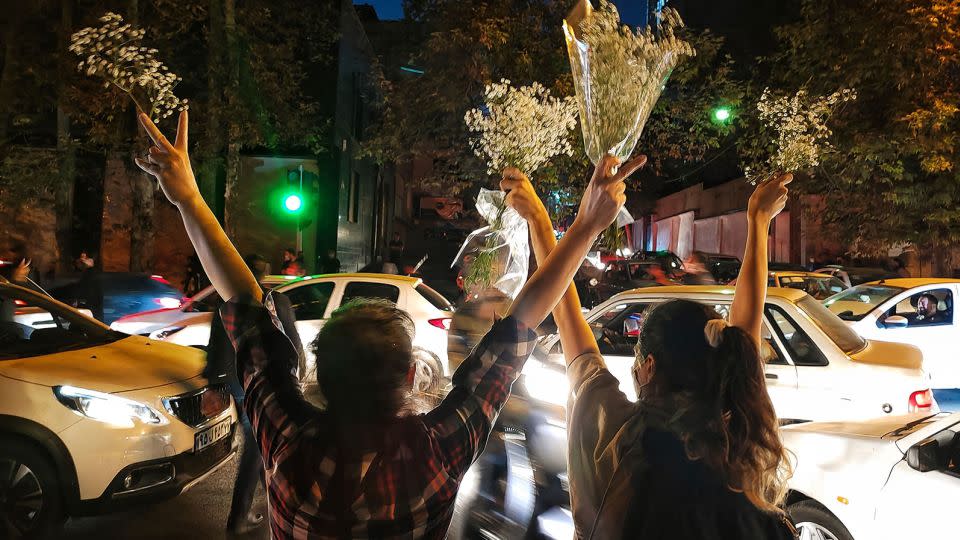Opinion: Iranian women know which battles to fight. They’ve been doing it for decades
Editor’s note: Mahnaz Afkhami was the minister of women’s affairs in Iran’s government before the 1979 Islamic Revolution. She is founder and president of Women’s Learning Partnership and executive director of the Foundation for Iranian Studies. Her most recent book is “The Other Side of Silence: A Memoir of Exile, Iran, and the Global Women’s Movement,” published by the University of North Carolina Press. The views expressed in this commentary are her own. View more opinion at CNN.
On September 16, 2022, Mahsa Amini, a young Kurdish Iranian woman, died while she was in the custody of Iran’s morality police for the “crime” of inadequate veiling. This event spearheaded an uprising that soon captured global attention and gained support, from grassroots activists to world leaders.

As we have come to expect, the Iranian regime reacted to the uprising with horrific brutality. But in the end, the courageous women who were on the streets shouting one of the most profound yet easily accepted slogans — “Woman, Life, Freedom” — have made a lasting difference. These three words were repeated in demonstrations by women and men around the world and appeared in different languages on buildings, billboards and flags across the globe.
People ask whether this will be just another event suppressed by the violent response of the Islamic Republic. I do not believe it will be. A few days ago, I spoke with a woman activist in Tehran who pointed out, “The women have won. The city looks different. Women walk around as they wish — without veils — and sit in conversation with their male friends and family in coffee shops.”
While the government is still intent on cracking down on women for improperly following the dress code, the social norms in Iran are shifting.
On the anniversary of Amini’s death, it would be helpful to look at the evolution of the role of women in the Islamic Republic and to follow the ongoing process of their courageous struggle for their autonomy and rights.

Iranian women were drawn into the Islamic Revolution of 1979 by the false promises of Ayatollah Ruhollah Khomeini, who said, “In Islamic society women will be free to choose their own destiny and own activity.” He also claimed that he would go to his home in Qom, the city of clerics, and would have nothing to do with government. That turned out to be a lie — and shortly after he returned to Iran that February, he declared compulsory veiling, even before a government was established or there was a constitution.
On March 8, 1979, International Women’s Day, tens of thousands of women demonstrated against his decree and were attacked by pro-revolution forces.
Since then, Iranian women have used every opportunity to pressure the Islamic government for their rights. But they have lost the battle where the law is concerned, and Iran has gone from being at the forefront of women’s rights in the Middle East in 1978 to being ranked one of the worst countries in the world when it comes to gender equality.
But women’s activists learned important lessons from decades of consciousness-raising and mobilization, drawing on each uprising and movement since the 1979 revolution.
One of the most successful movements was in 2006, with the One Million Signatures Campaign for Reform of Discriminatory Family Laws. In that campaign, women organized in communities and went door to door in neighborhoods, talking to men and women, explaining the changes they were seeking, and asking for signatures. They worked with conservative religious women in areas where they were in agreement, such as equal rights and education and jobs. Around 30% of the signatures they gathered were from men.
For a time during Mohammad Khatami’s presidency from 1997 to 2005, some women activists argued that it might be possible to reform the system, given Khatami’s promises of a more tolerant society and comments about how women should not be regarded as “second-class citizens.” But his presidency did not lead to substantial legal changes, and by the time Mahmoud Ahmadinejad was in office, the notion of reform lost credibility.
As a response to what was widely considered a fraudulent election in 2009, the Green Movement was born two years before the Arab Spring. Protesters who were a part of the Green Movement eventually built on the alleged election fraud to make greater demands for the democratic rights originally sought in the 1979 revolution. Both men and women demonstrated in the hundreds of thousands and shouted, “Where is my vote?”
Since that time, the expansion of technology and the presence of a connected, well-educated diaspora with women leaders in science, technology, the arts and politics have been important factors in encouraging and supporting those who remain inside.
Iranian women have been deprived of the rights that they know and for which they have worked. But they have fought a medieval government and won a great deal. The Woman, Life, Freedom movement has succeeded in transporting and amplifying their voices and their activism across the world. This may be the first women-led counterrevolution in history — and it’s one in which men and women have participated together. It also offers an example of how women can work with each other and with men to engage in dialogue, provide support and respect differences of opinion.
In every area of endeavor that does not need government engagement, the women of Iran have succeeded. They own businesses, teach, connect with each other and with their supporters outside the country, and are unafraid. They have forced the government to back down.
They want a government that is worthy of their courage and wisdom. But they are realistic enough to know that while governments around the world continue to engage with the Islamic Republic and do not oppose it, unarmed civilians will not be the force that unseats the government. They have won the battles they chose and could win. The battle for the government they wish will require other means.
They are mobilizing men and women, learning the basics of democratic governance, and preparing civil society for democracy — and when they finally receive serious, consistent support, they will be ready.
For more CNN news and newsletters create an account at CNN.com

